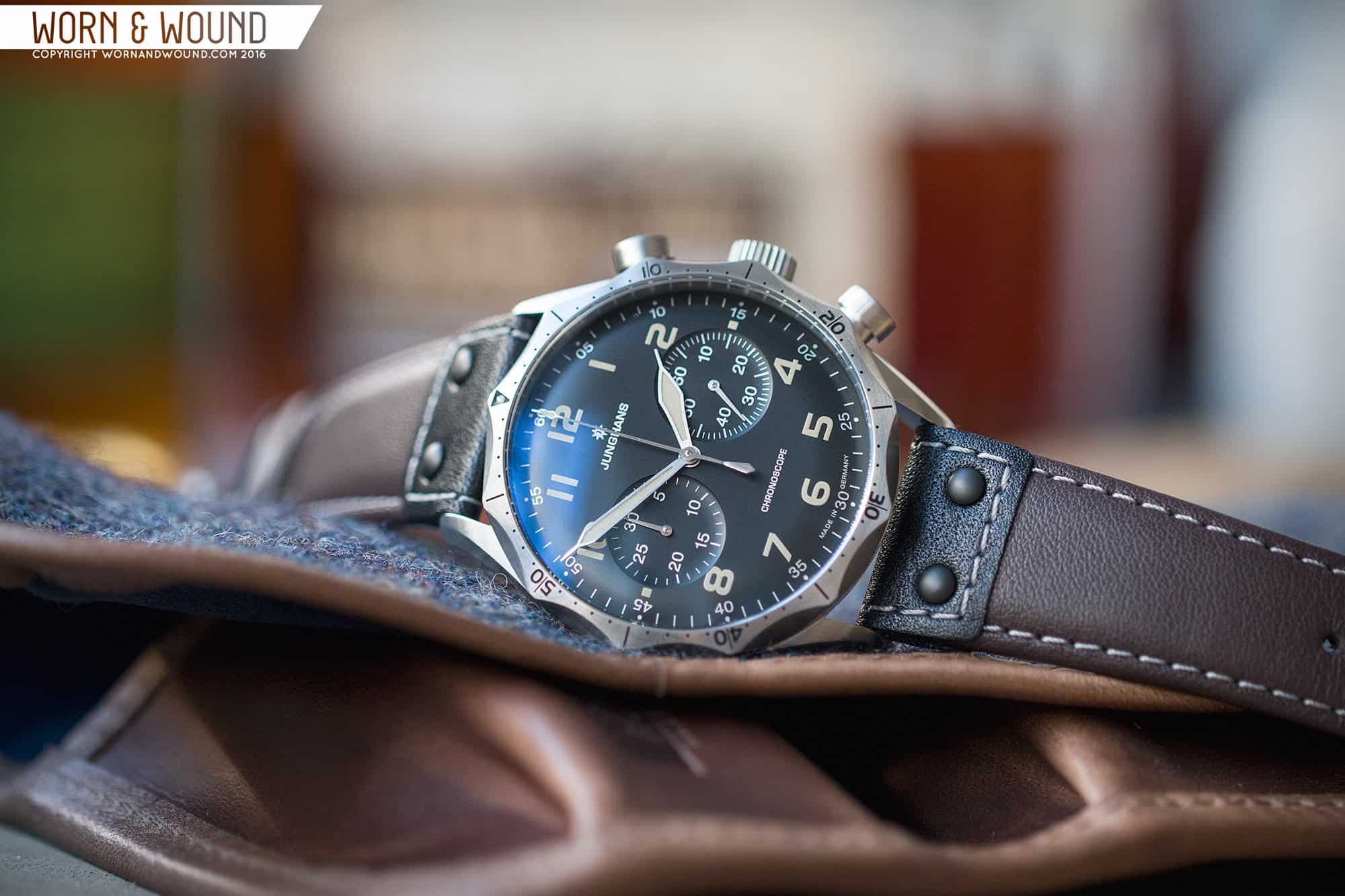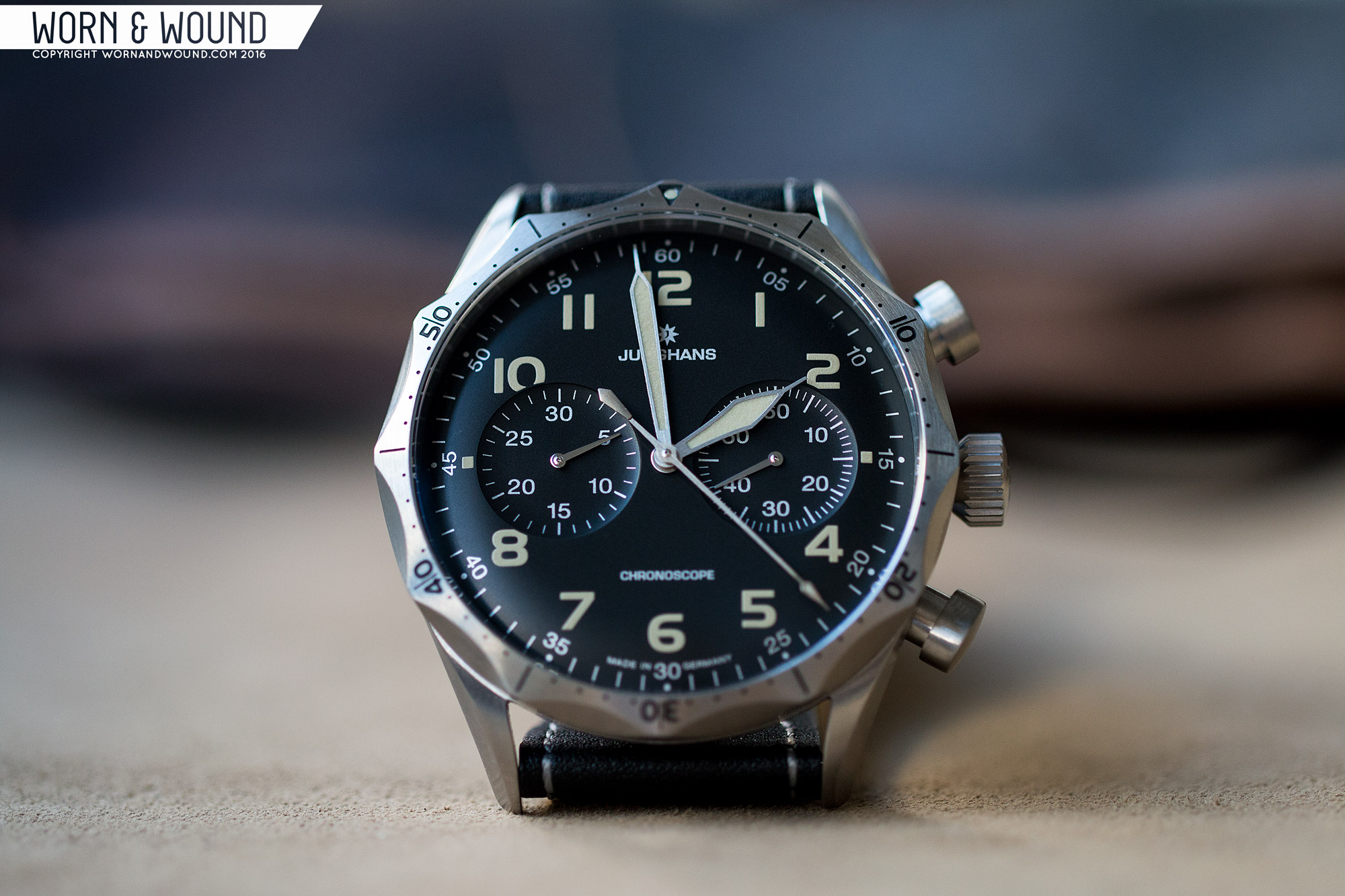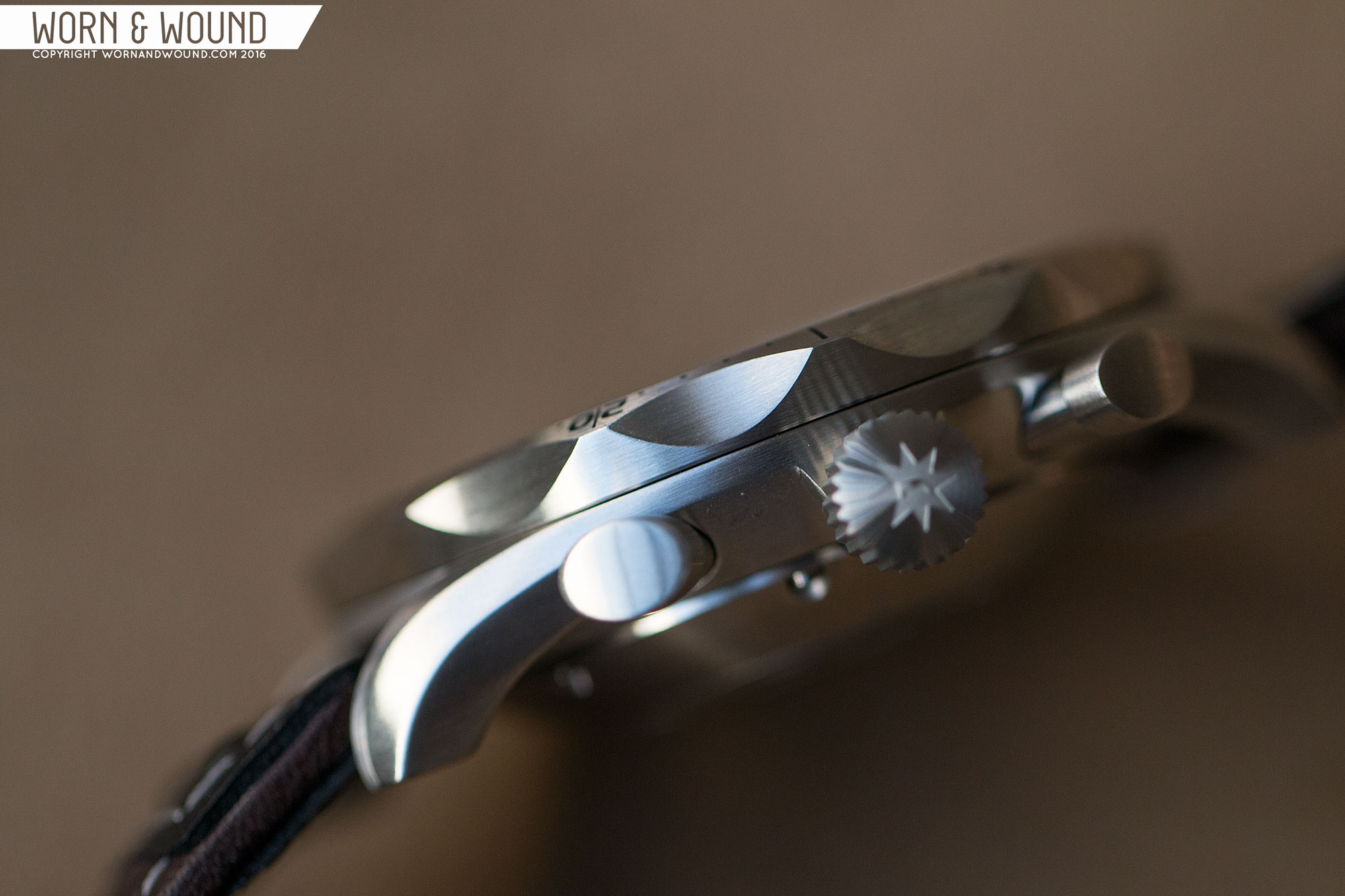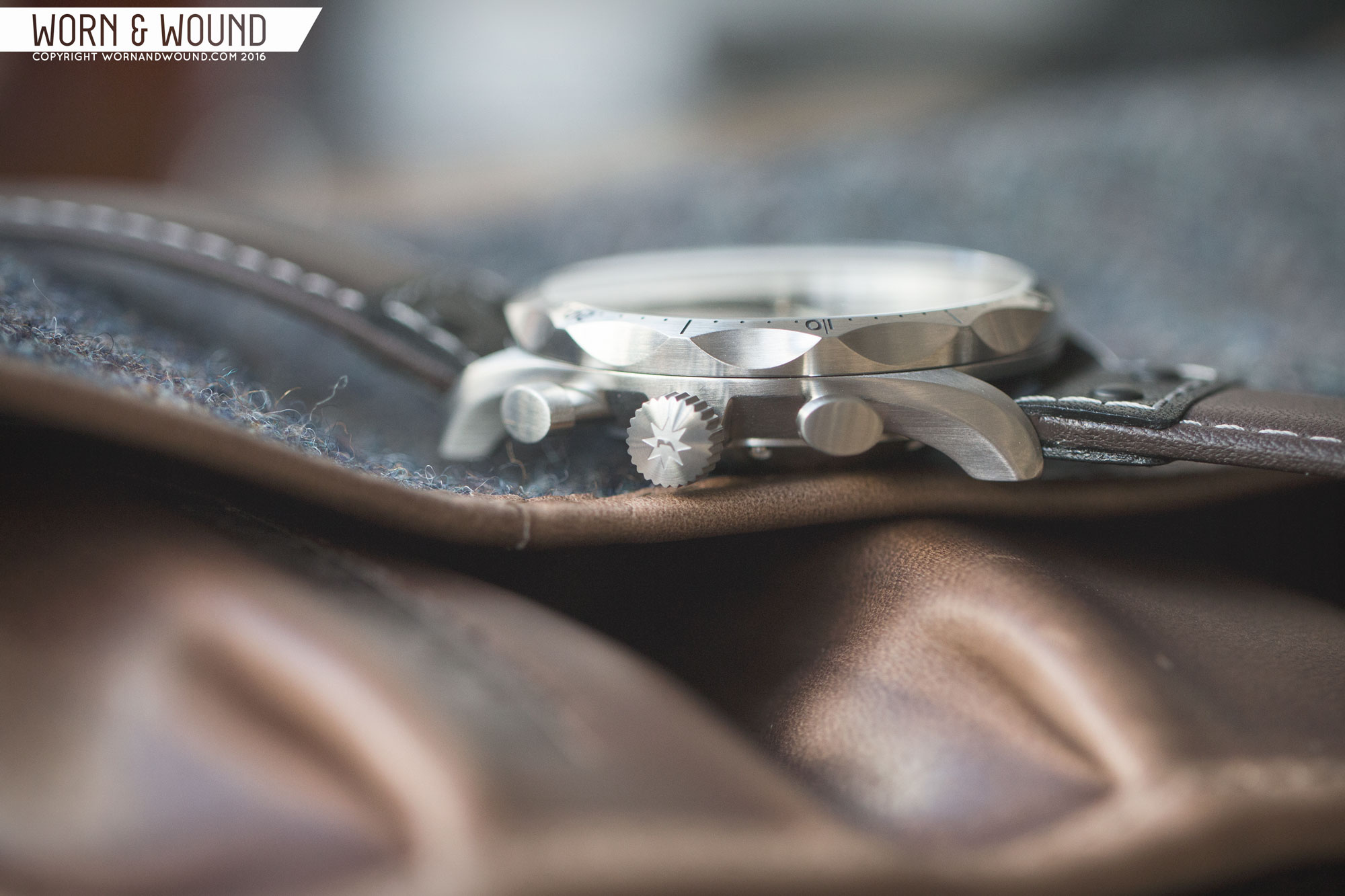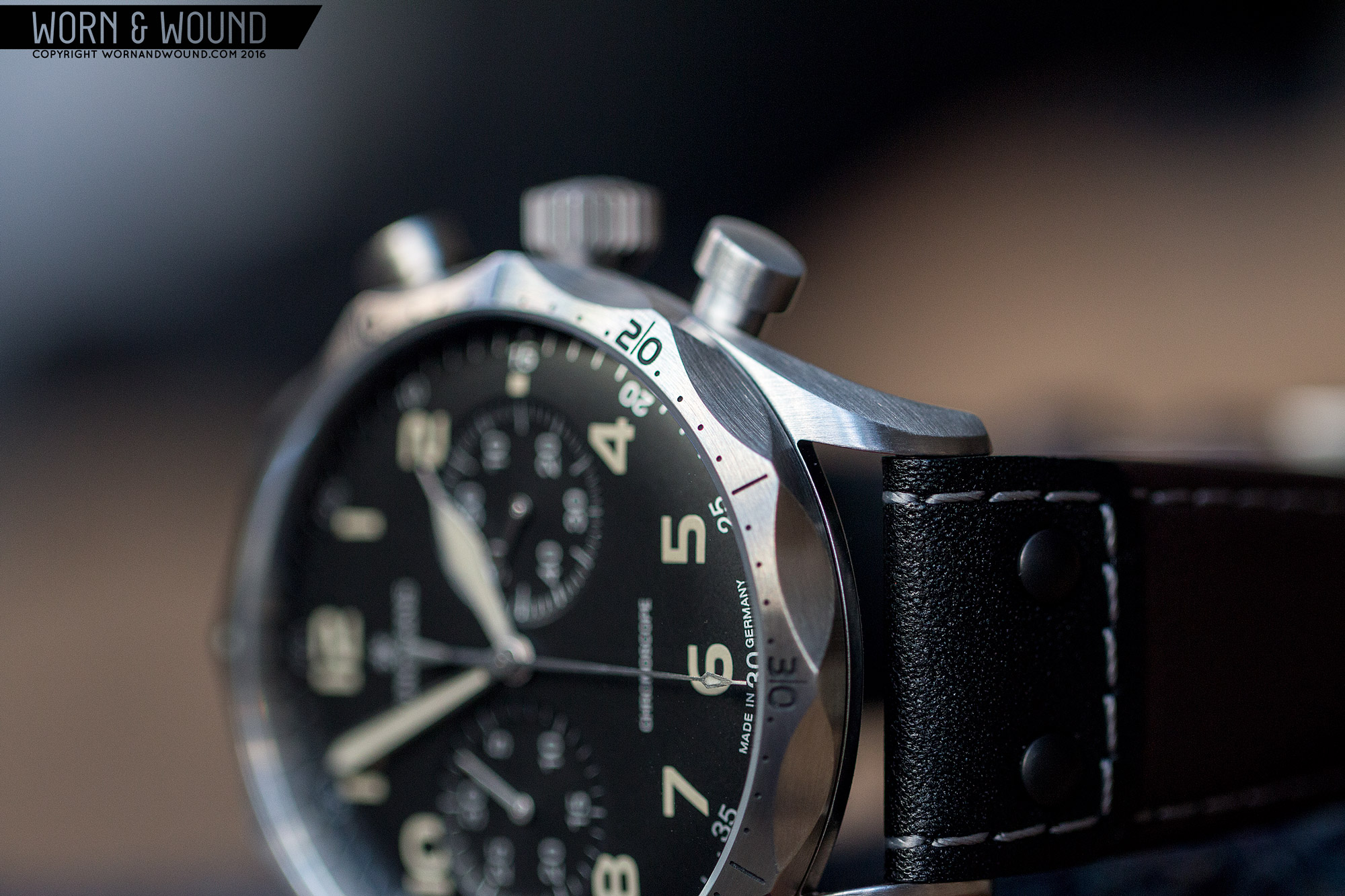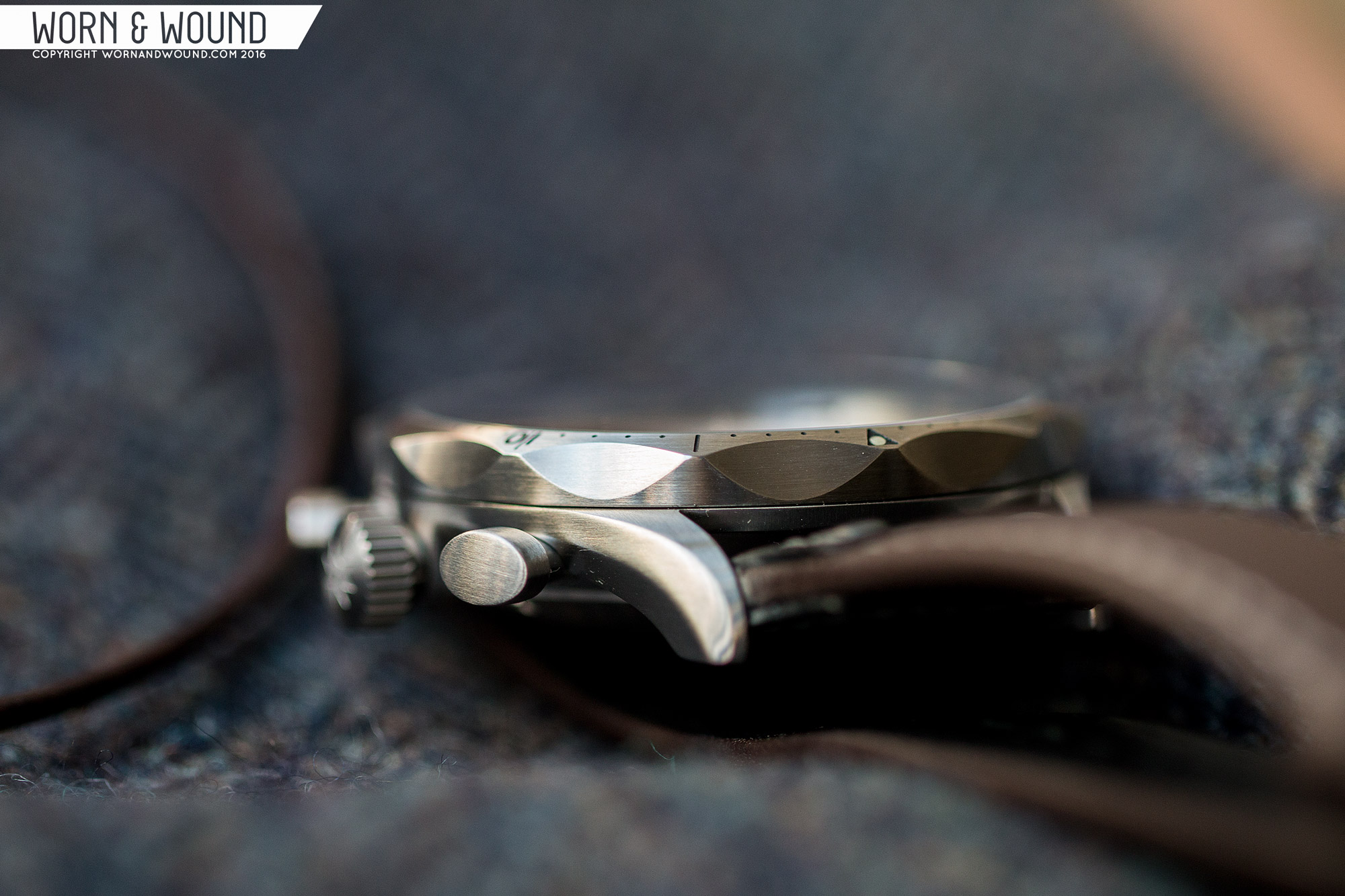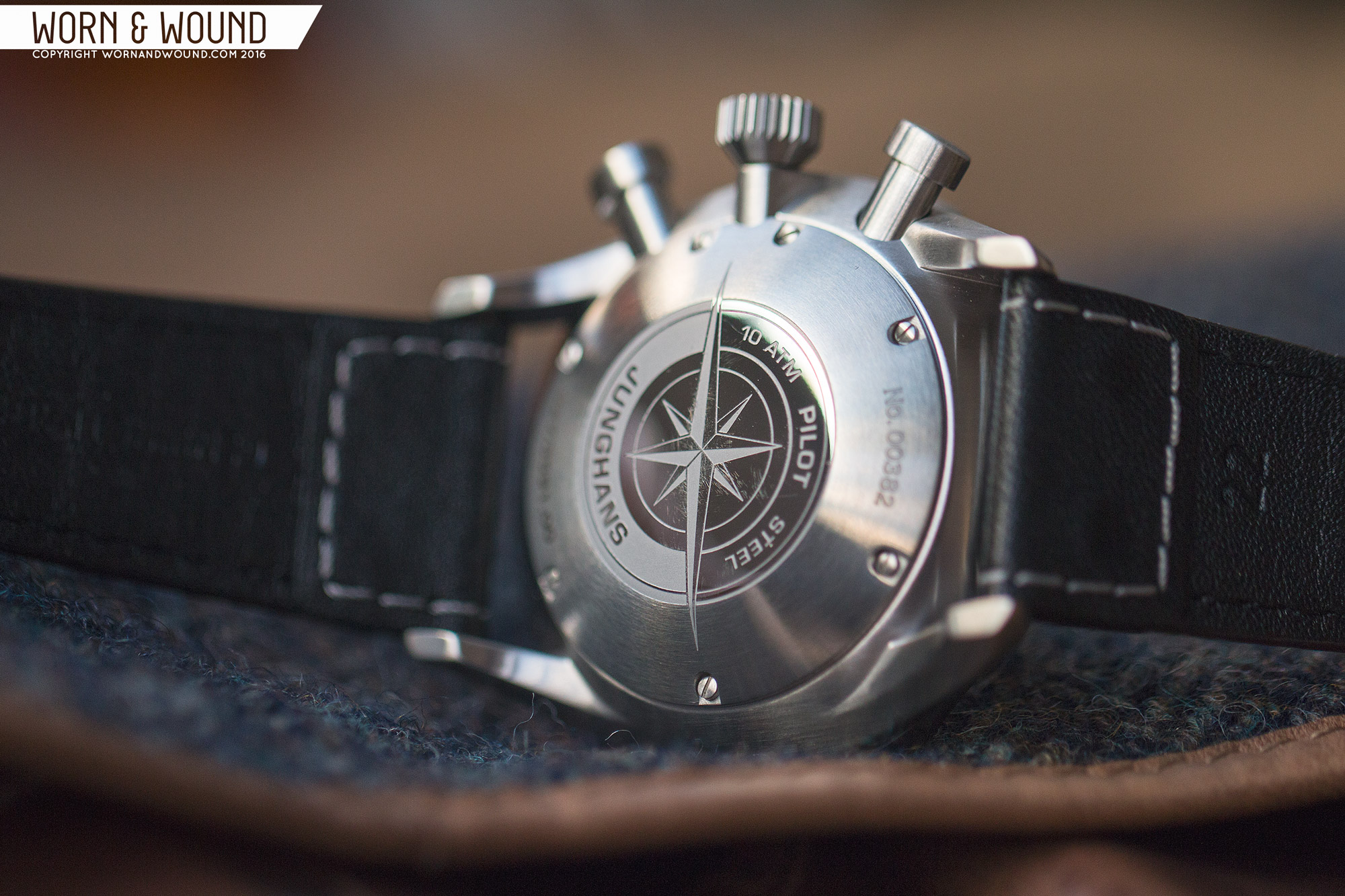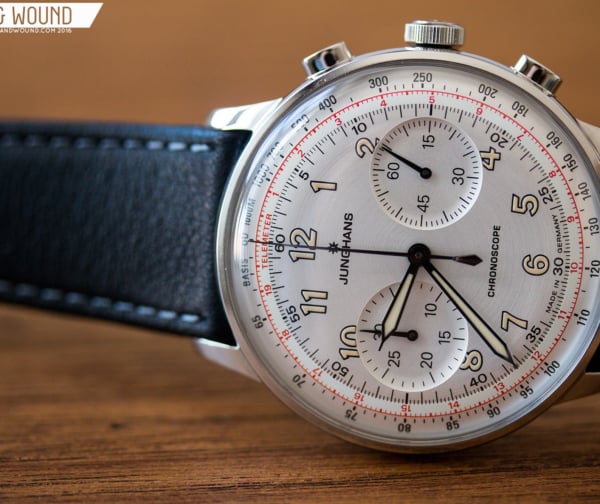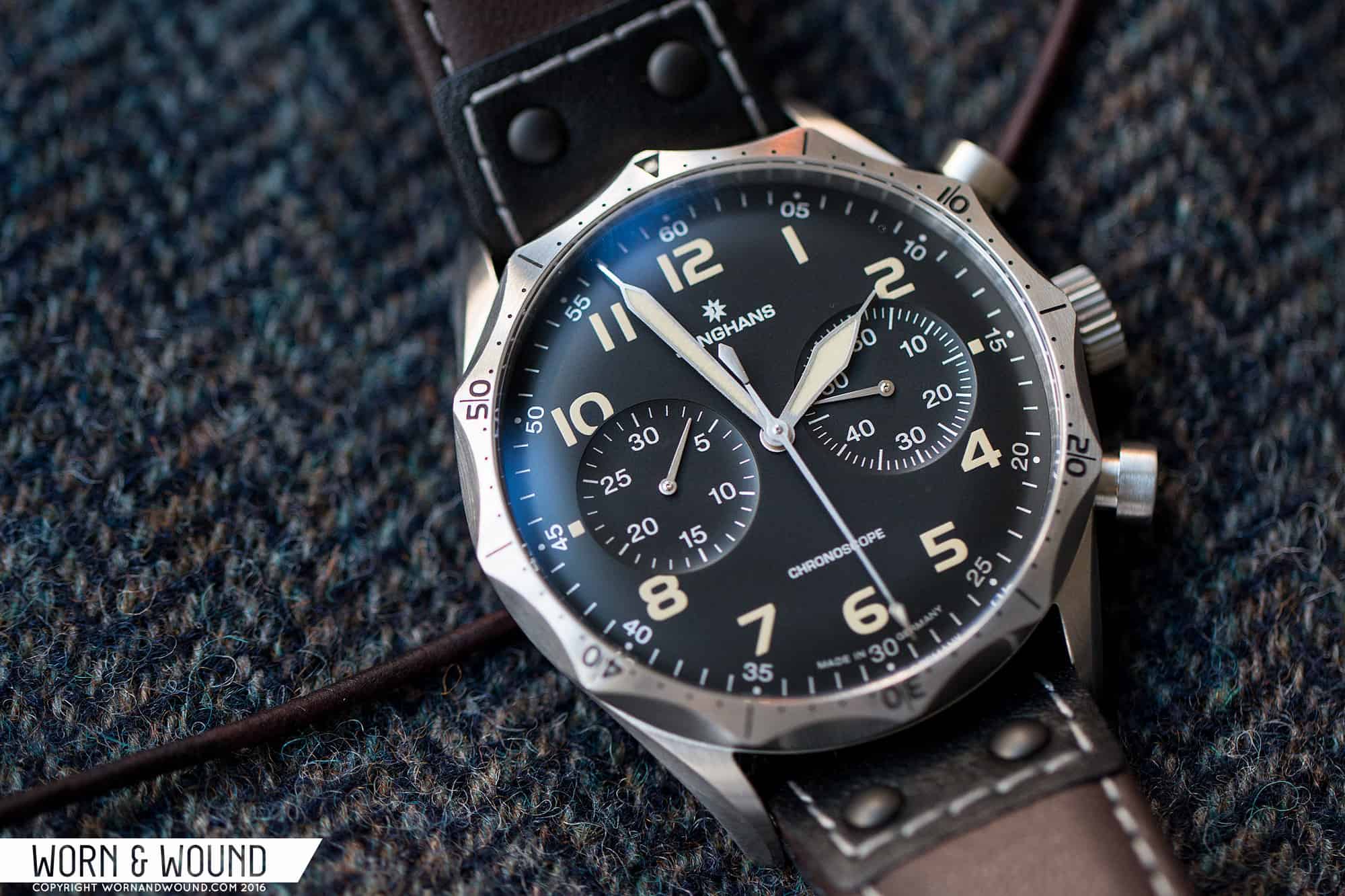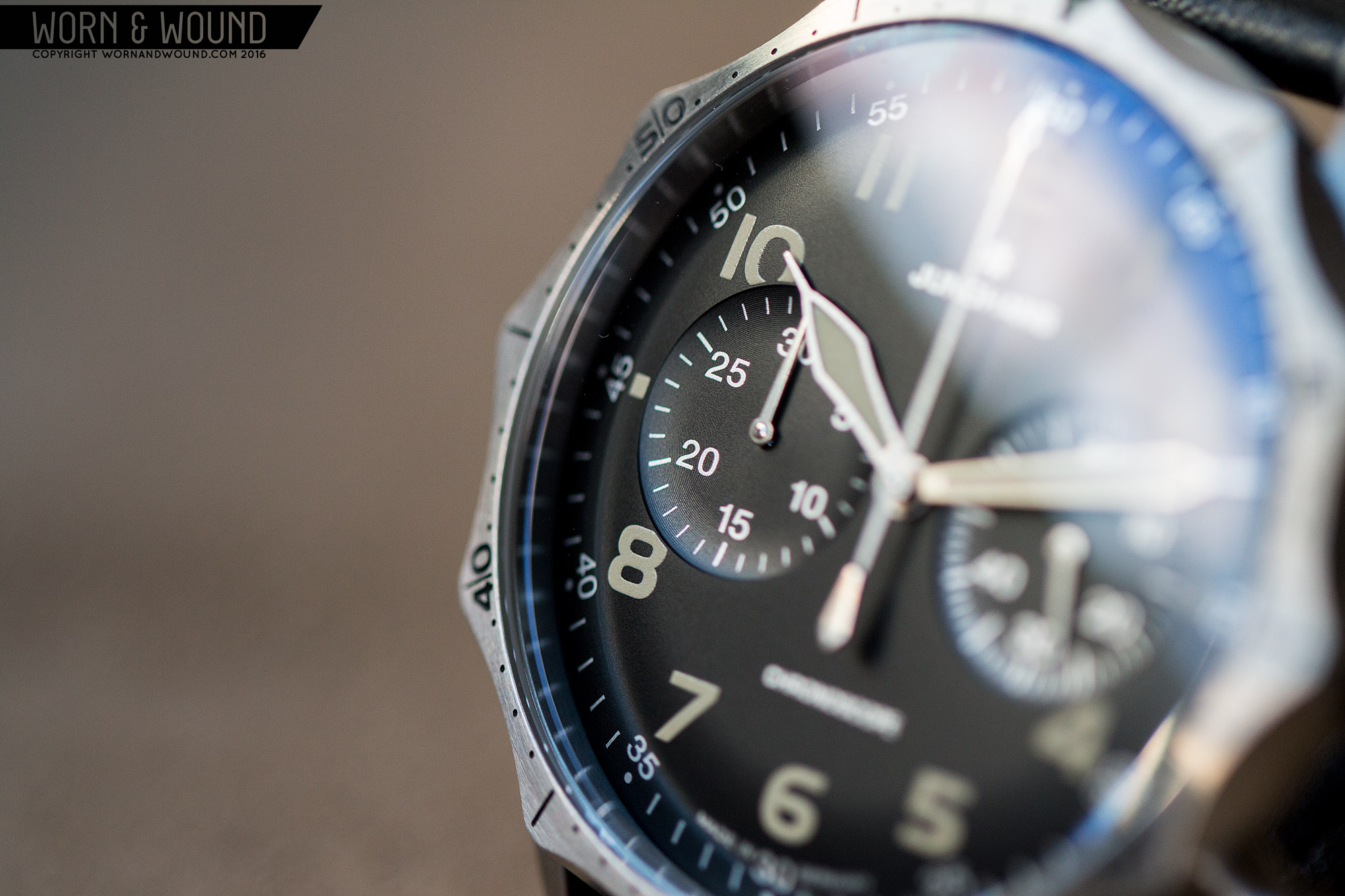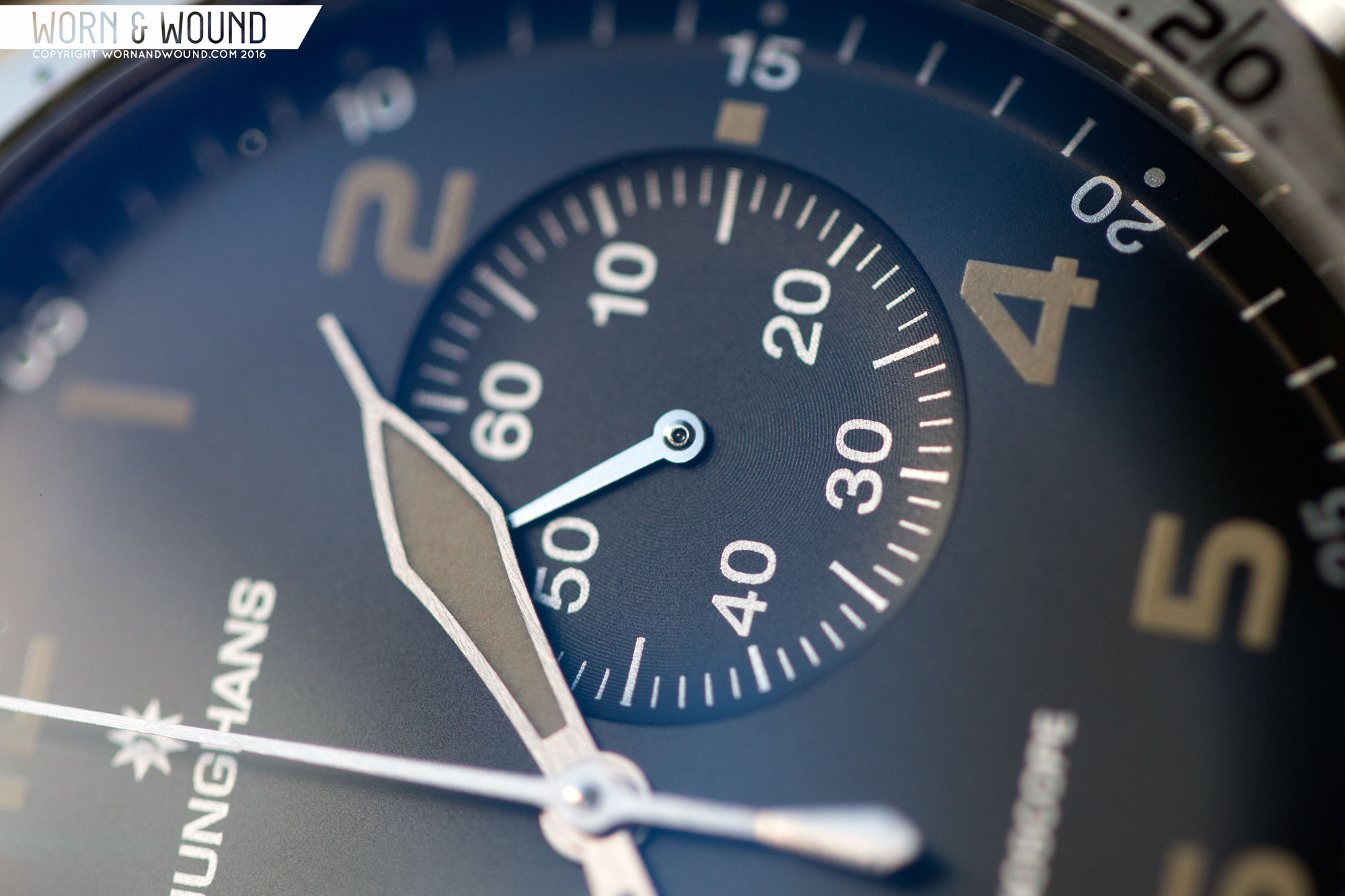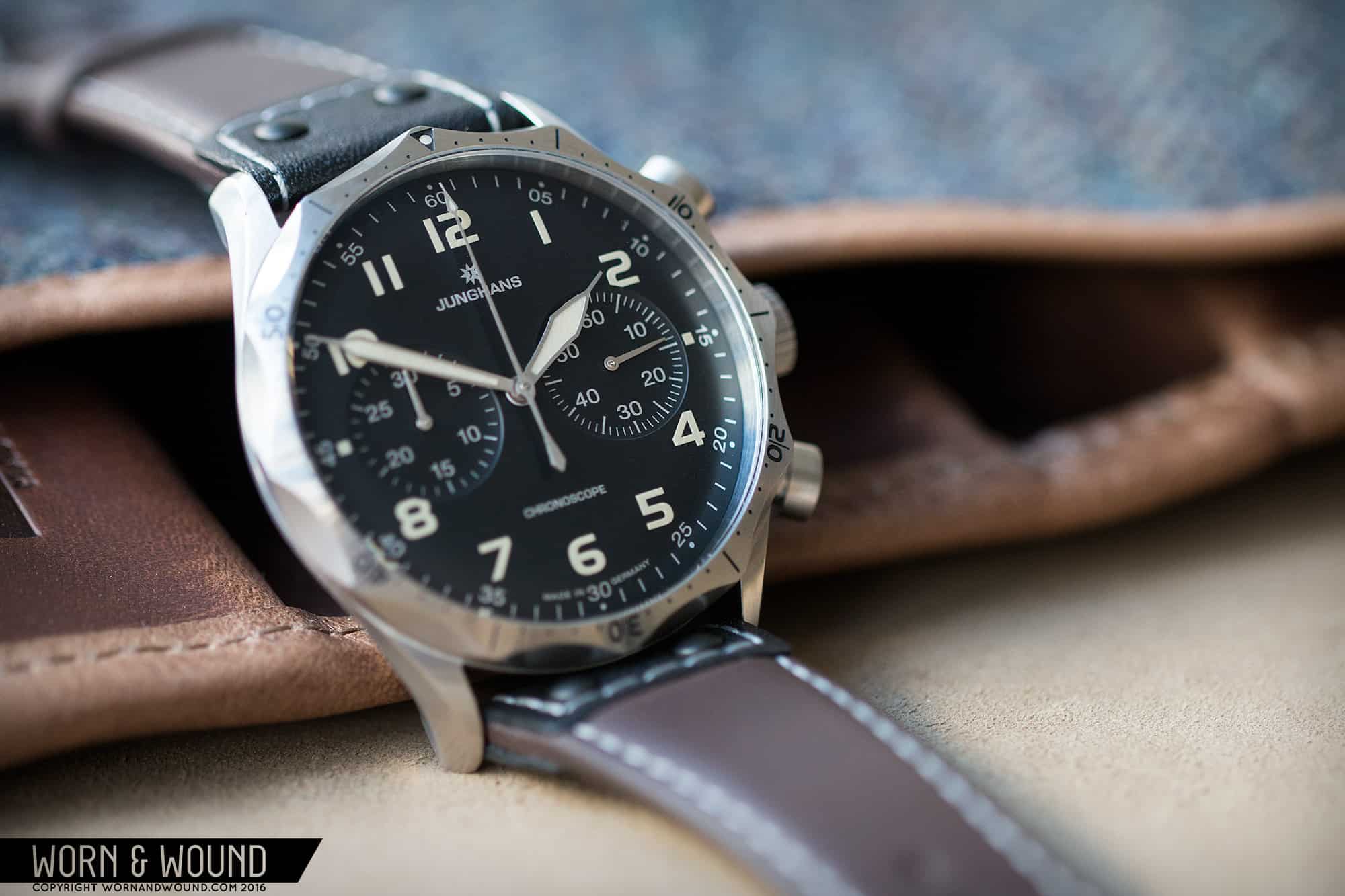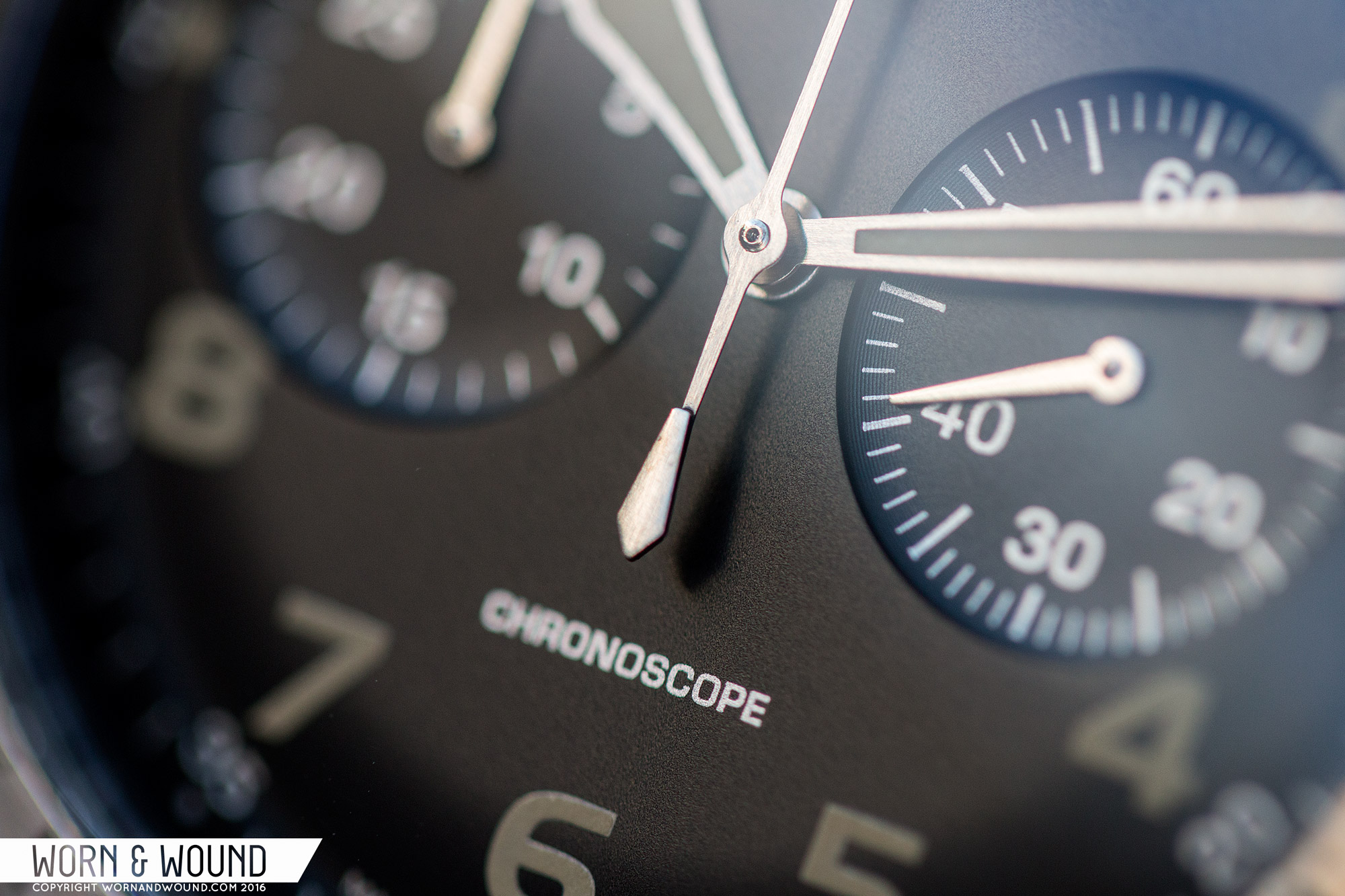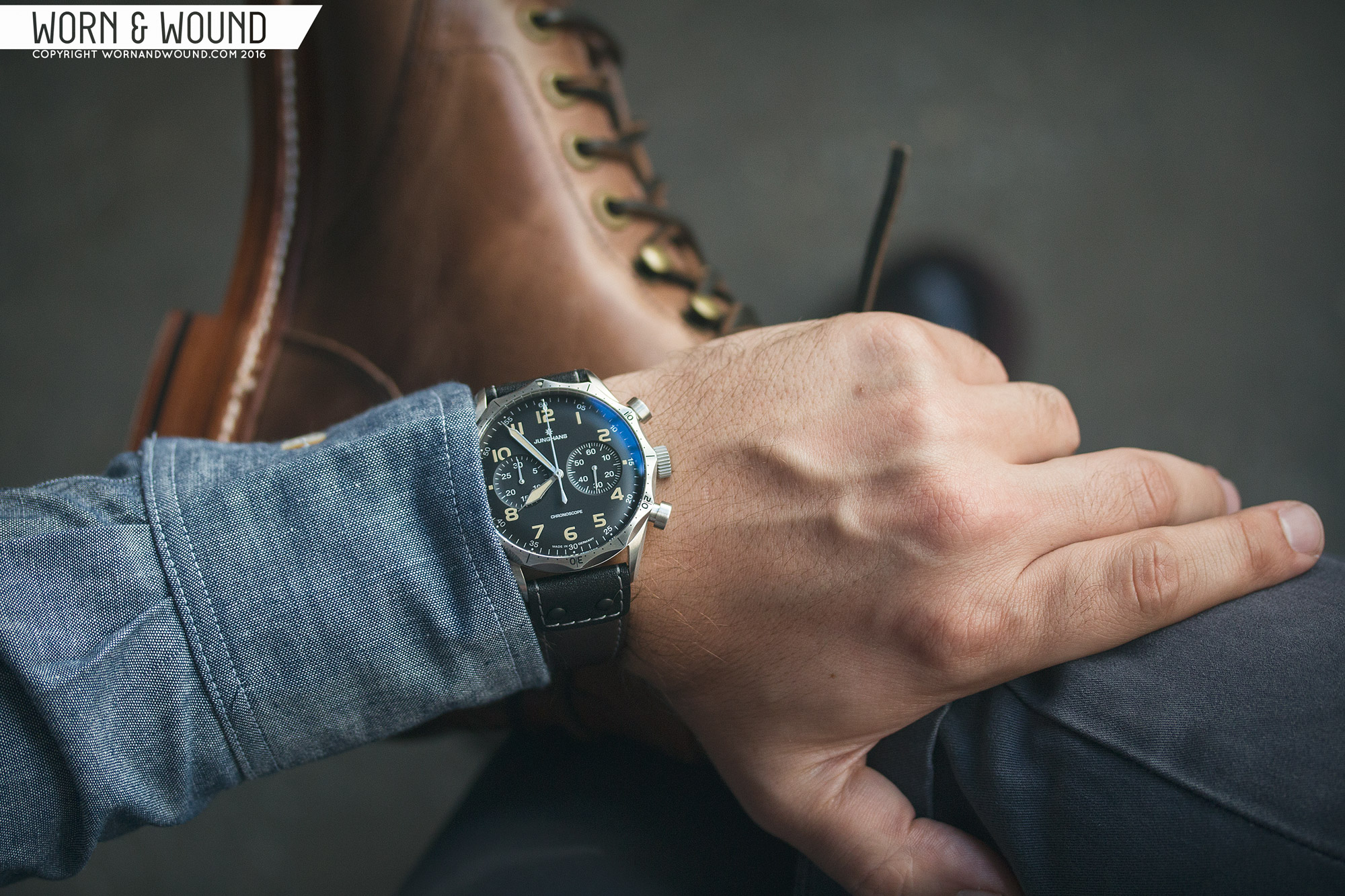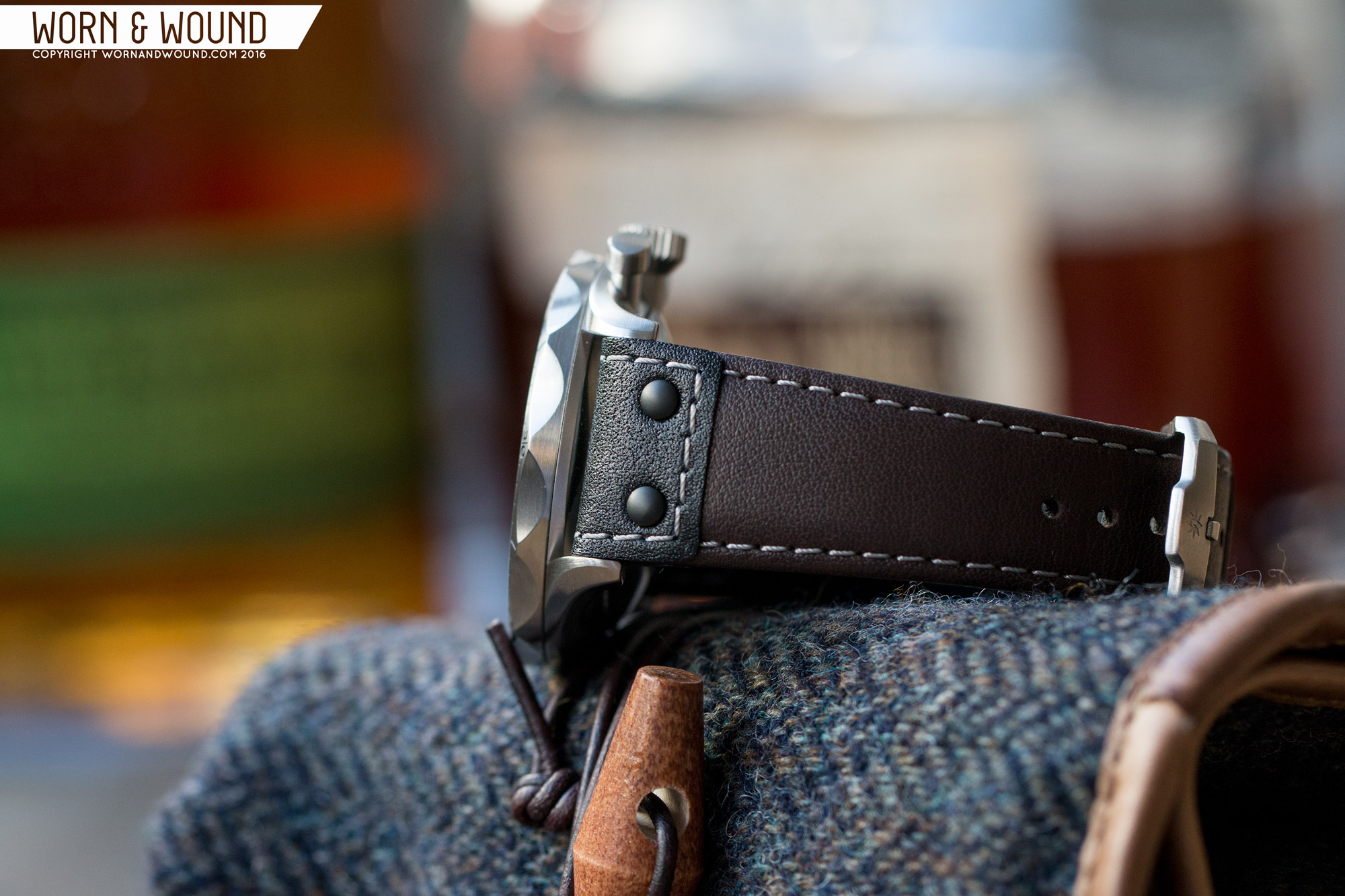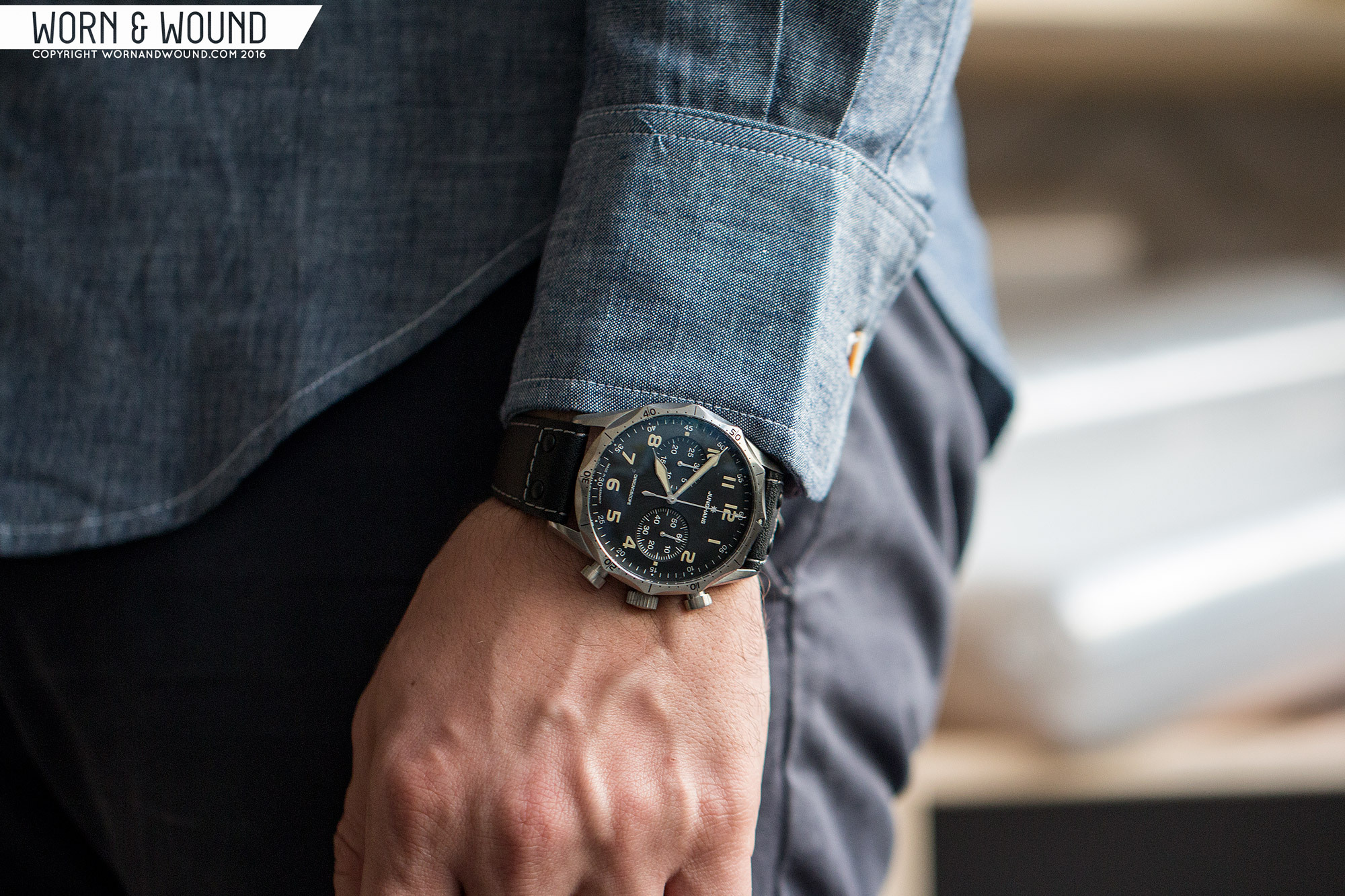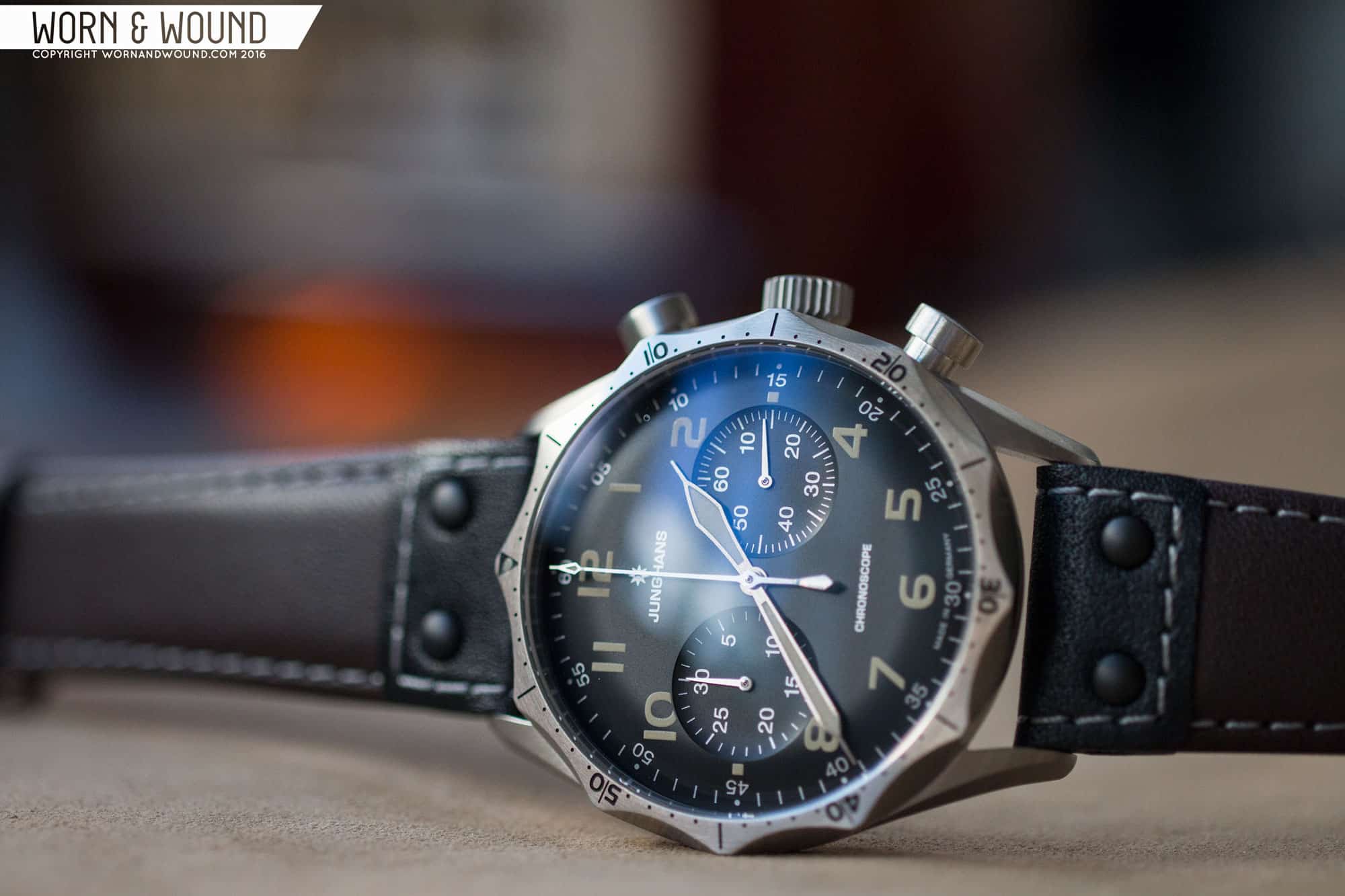In the last couple of years, Junghans has focused on expanding upon their Meister line of watches, bringing out some incredible watches. The Meister line seems to be at the core of the Junghans brand and where they are going, though for a time was limited to dressier designs. They riffed on the Max Bill line the brand is so well known for, but skewed more classic. That said, they had a distinct look and a very modern execution that made them unique and appealing. A quick look at our review of the Meister Kalendar Moon model will make that apparent.
From there, Junghans started playing with the format, releasing watches that utilized some of the aesthetic cues of the dressier pieces, but went in different thematic directions. For example, there is the Meister Telemeter, a stunning chronograph that was inspired by early-mid 20th century designs and features a striking dial. Then at Basel 2016, they showed their new Meister Driver range, which as the name suggest draws from automotive sources.
Today we’re going to take a look at a watch that is the biggest departure from the series, but a welcome addition, the Junghans Meister Pilot Chronograph. Like the Telemeter, the Pilot draws on the past, in this case from a watch they made in 1955. Designed and issued to the newly-established Bundeswehr, the watch featured a unique bezel, dual-register layout and Junghans in-house column wheel movement, the J88. Though perhaps lesser know than watches like the Heuer Bund, the originals are still wildly collectible and exceptionally rare.
Though Junghans has pulled inspiration from this watch before, the new Meister Pilot Chronograph draws closely on the elements that made that design so interesting. In particular it has that same bezel made larger and more prominent, a similar military inspired dial and angled lugs. Yet, at the same time it’s not a 1 for 1, having a firm root in their modern watches as well, and a modern size at 43mm. Powered by the J880.4 movement, which is likely an ETA 2892 base with a Dubois Depraz 2030 (unconfirmed, but based on the J880.3 should be) and featuring a sapphire (!) crystal, the Meister Pilot comes in with a price tag of $2,465. The watch is available in two versions, vintage and classic (the former featured in this review), which indicates the lume and strap color.









 Featured Videos
Featured Videos




